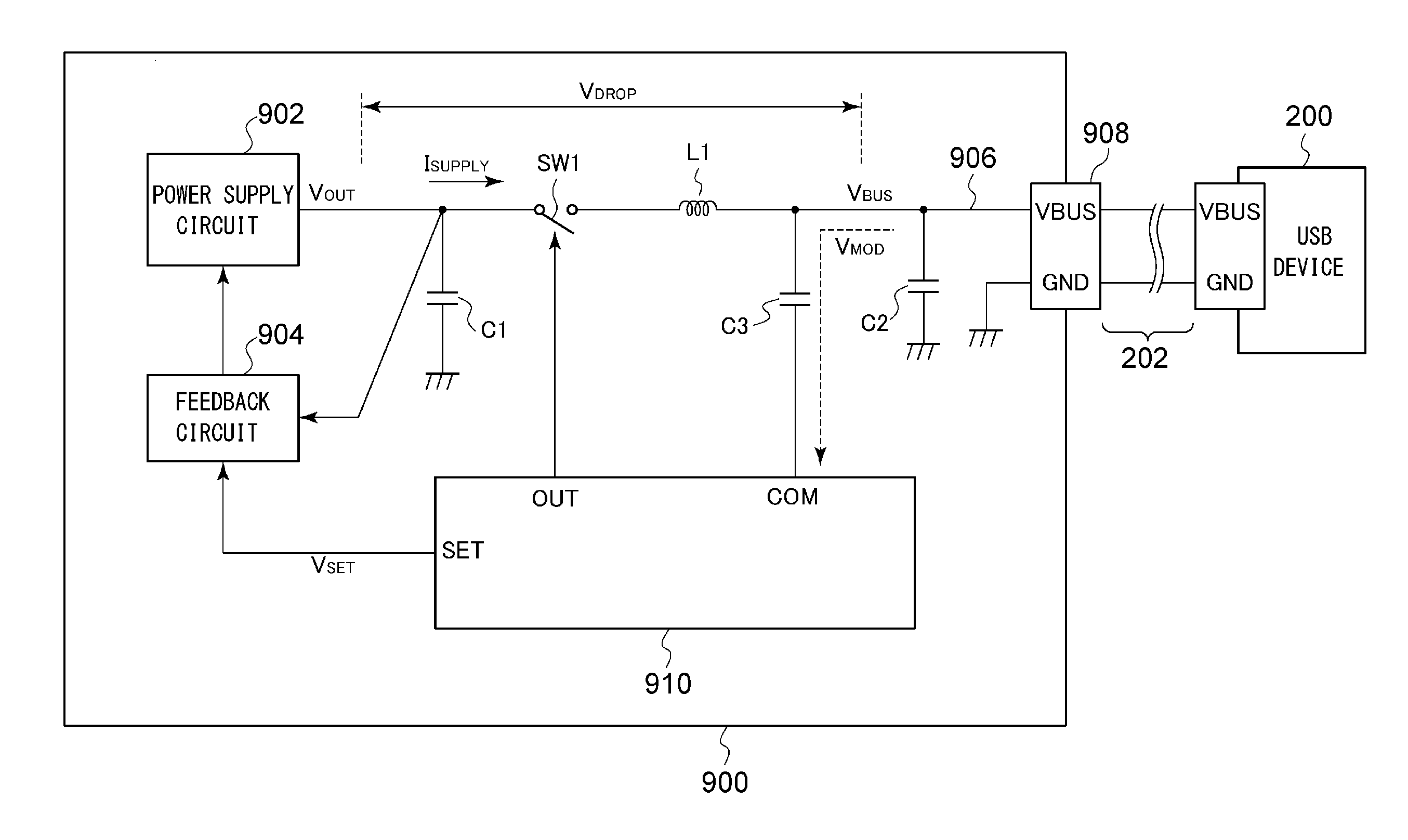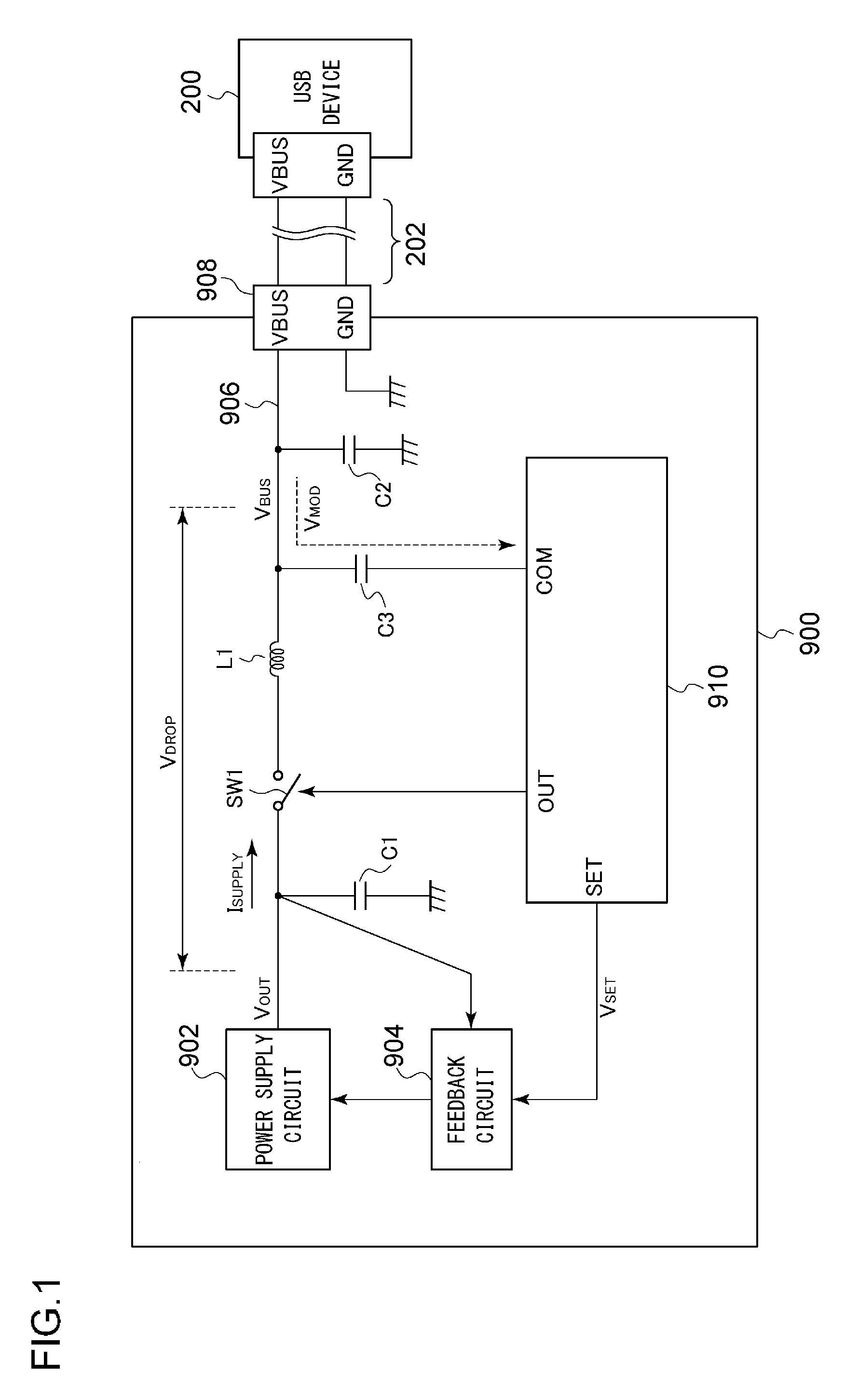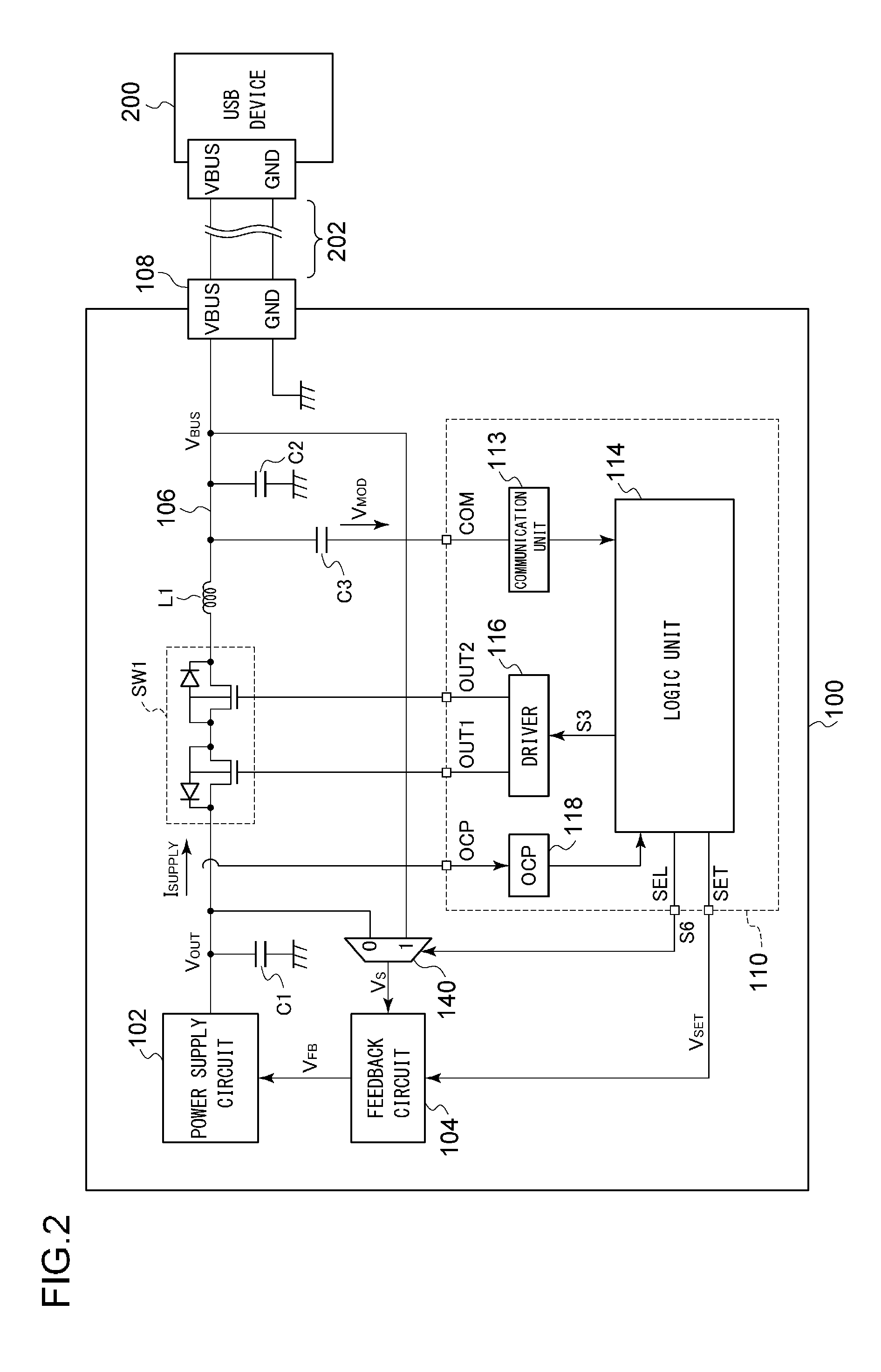USB power supply apparatus
a power supply apparatus and usb technology, applied in the direction of power conversion systems, instruments, dc-dc conversion, etc., can solve the problems of high cost of mosfets and the same problem can occur in usb type-c specifications, and achieve the effect of suppressing voltage drop
- Summary
- Abstract
- Description
- Claims
- Application Information
AI Technical Summary
Benefits of technology
Problems solved by technology
Method used
Image
Examples
first modification
[First Modification]
[0070]Description will be made in the embodiment regarding an arrangement in which the selector 140 selects the bus voltage VBUS during a period in which the switch SW1 is in the on state. However, the present invention is not restricted to such an arrangement. Also, the controller 110 may control the selector 140 based on the supply current ISUPPLY during a period in which the switch SW1 is in the on state. For example, when the supply current ISUPPLY is larger than a predetermined threshold value, i.e., when the voltage drop VDROP is large, the controller 110 may instruct the selector 140 to select the bus voltage VBUS so as to stabilize the bus voltage VBUS in the vicinity of the setting voltage VSET. Conversely, when the supply current ISUPPLY is smaller than the threshold value, i.e., when the voltage drop VDROP is small, the controller 110 may instruct the selector 140 to select the output voltage VOUT.
second modification
[Second Modification]
[0071]FIG. 5 is a perspective view of a USB power supply apparatus 100a according to a second modification. The receptacle 108 is provided to one end of a cable 150 instead of being provided to a casing 101 of the USB power supply apparatus 100a. The cable 150 is provided with a feedback line 152 in addition to the bus line 106 and a ground line 107. One end of the feedback line 152 is connected in the vicinity of a connection node that connects the bus line 106 and the receptacle 108. The feedback line 152 is used to detect the bus voltage VBUS at the end of the cable 150. The selector 140 receives, as its input signals, the output voltage VOUT of the power supply circuit 102 and the bus voltage VBUS at the end of the cable 150.
[0072]In a case in which the cable 150 does not include the feedback line 152 as a built-in component, the selector 140 receives, as its input signal, the bus voltage VBUS′ at the start point of the cable 150. In this case, the bus volta...
third modification
[Third Modification]
[0073]Description has been made in the embodiment regarding the USB power supply apparatus 100 that conforms to the USB-PD specification. Also, the present invention is applicable to an arrangement that conforms to the USB Type-C specification. FIG. 6 is a block diagram showing a USB power supply apparatus 100b according to a third modification. With the USB Type-C specification, a controller 110b and the power receiving apparatus 200 communicate with each other via a dedicated line 204. That is to say, the modulation voltage VMOD is not superimposed on the bus voltage VBUS. Thus, such an arrangement does not require the capacitor C3 shown in FIG. 2. Also, the inductor L1 may be omitted. The other configuration is the same as that shown in FIG. 2.
PUM
 Login to View More
Login to View More Abstract
Description
Claims
Application Information
 Login to View More
Login to View More - R&D
- Intellectual Property
- Life Sciences
- Materials
- Tech Scout
- Unparalleled Data Quality
- Higher Quality Content
- 60% Fewer Hallucinations
Browse by: Latest US Patents, China's latest patents, Technical Efficacy Thesaurus, Application Domain, Technology Topic, Popular Technical Reports.
© 2025 PatSnap. All rights reserved.Legal|Privacy policy|Modern Slavery Act Transparency Statement|Sitemap|About US| Contact US: help@patsnap.com



